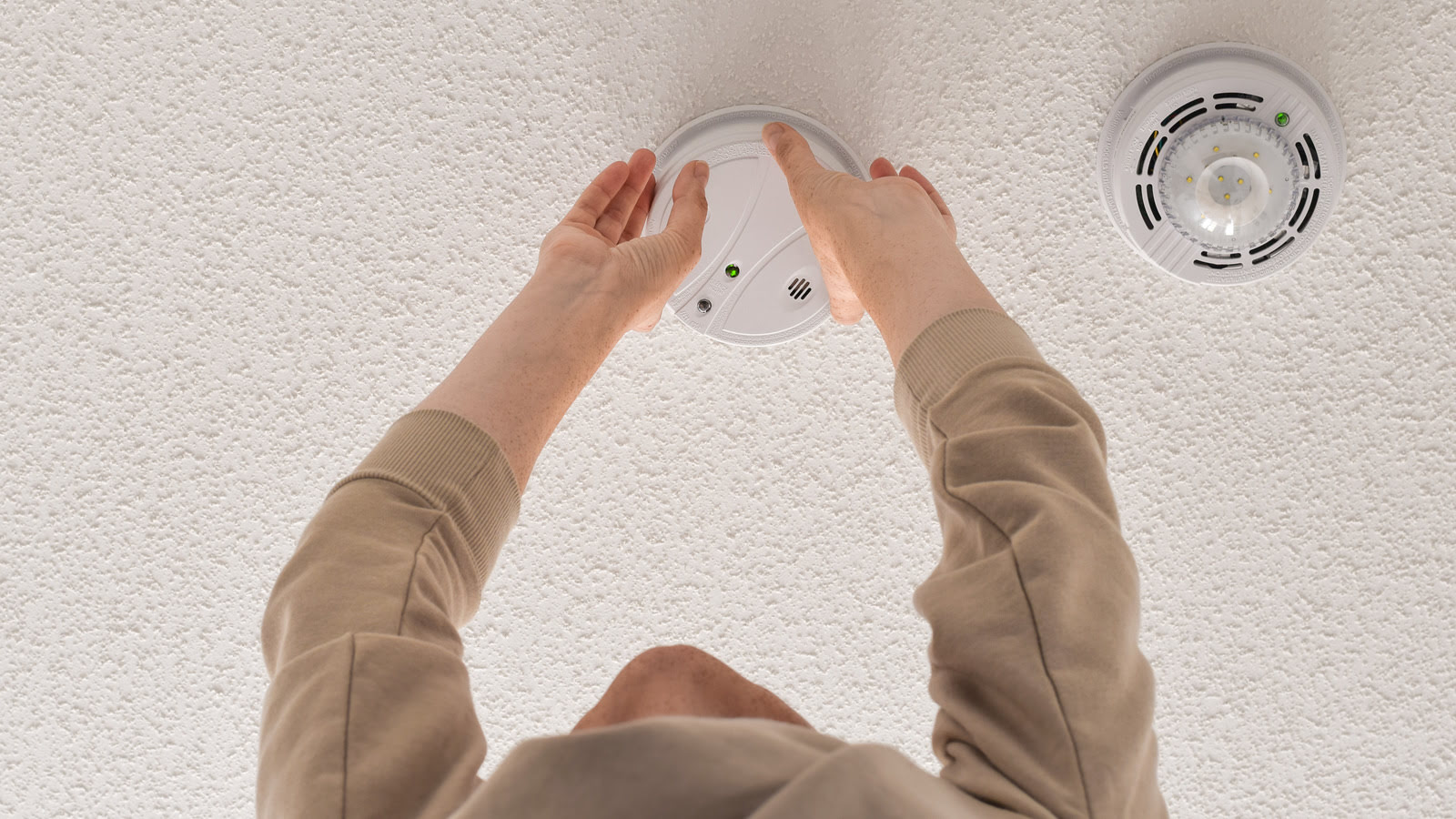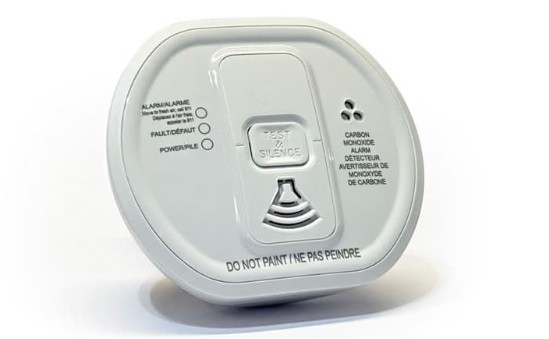Where Should I Put Carbon Monoxide Alarm

Many homeowners struggle with the seemingly simple question of where to place their carbon monoxide (CO) alarms. It sounds straightforward, but incorrect placement can render these life-saving devices ineffective, offering a false sense of security. This article provides a clear, step-by-step guide to help you determine the best locations for your CO alarms, ensuring your home is properly protected. We'll also cover common issues, troubleshooting steps, and when it's time to call a professional.
Understanding the Problem: Why Placement Matters
Carbon monoxide is a colorless, odorless, and tasteless gas produced by the incomplete burning of fuels. It's often called the "silent killer" because you can't detect it with your senses. CO alarms are designed to alert you to dangerous levels of this gas, giving you time to evacuate and seek medical attention. However, if the alarm is placed in an unsuitable location, it might not detect the CO quickly enough, or at all.
Common issues with CO alarm placement include:
- Placing alarms too high or too low.
- Obstructing the alarm with furniture or curtains.
- Putting alarms in areas with poor ventilation.
- Not having enough alarms throughout the house.
Step-by-Step Guide: Diagnosing and Fixing CO Alarm Placement Issues
Follow these steps to ensure your CO alarms are correctly positioned:
Step 1: Identify Potential CO Sources
First, you need to understand where CO might originate in your home. Common sources include:
- Fuel-burning appliances: Furnaces, water heaters, stoves, ovens, fireplaces, and dryers.
- Attached garages: Especially if you idle your car inside.
- Portable generators: Never operate these indoors or in enclosed spaces.
- Blocked chimneys or flues: These can cause CO to back up into your home.
Make a list of these potential sources and note their locations within your house. This will help you determine the areas that require the most attention.
Step 2: Review Alarm Placement Recommendations
Most CO alarm manufacturers provide specific instructions for placement in the user manual. Always refer to this manual first. However, general guidelines include:
- Central location on each level: Place at least one alarm on every level of your home, including the basement.
- Near sleeping areas: CO can be most dangerous while you're asleep and unable to detect the symptoms. Place alarms in hallways outside bedrooms.
- Within 10 feet of sleeping areas: If hallways aren't ideal, place alarms inside bedrooms, within 10 feet of the bed.
- On the wall or ceiling: Follow the manufacturer's recommendations. Generally, wall placement should be 5-6 feet from the floor. Ceiling placement should be at least 4 inches from any wall.
- Away from fuel-burning appliances: Don't place alarms directly next to or above appliances. The rapid fluctuations in CO levels during appliance startup can trigger false alarms. A distance of at least 10 feet is generally recommended unless otherwise specified by the manufacturer.
Step 3: Inspect Existing Alarm Placement
Now, carefully inspect the placement of your existing CO alarms and compare it to the recommendations you've gathered. Ask yourself the following questions:
- Is the alarm on every level of the house?
- Is it near sleeping areas?
- Is it at the correct height on the wall or ceiling?
- Is it obstructed by furniture, curtains, or other objects?
- Is it too close to a fuel-burning appliance?
- Is it near a door or window that could cause drafts and dilute the CO concentration?
Document any discrepancies you find. For example, "Alarm in the basement is obstructed by a pile of boxes," or "Alarm in the hallway outside the bedrooms is only 3 feet from the floor."
Step 4: Relocate or Add Alarms as Needed
Based on your inspection, relocate or add CO alarms to ensure proper coverage. Here's how:
- Relocating alarms: If an alarm is in a poor location (e.g., obstructed or too close to an appliance), carefully remove it and reinstall it in a more suitable spot. Follow the manufacturer's instructions for mounting. Ensure the new location meets all the recommended guidelines.
- Adding alarms: If you're missing alarms on any level of your home or near sleeping areas, purchase additional alarms and install them according to the manufacturer's instructions. Consider interconnected alarms, which will all sound if one detects CO, providing an extra layer of protection.
- Avoid these locations: Garages (unless specifically designed for garage use and placed according to manufacturer's instructions), kitchens, bathrooms, and laundry rooms unless they contain fuel-burning appliances. High humidity and temperature fluctuations can damage the sensor or cause false alarms.
When installing a new alarm, ensure you use the correct hardware for your wall or ceiling type. A stud finder can be helpful for locating wall studs for secure mounting.
Step 5: Test Your Alarms
After relocating or adding alarms, thoroughly test each one to ensure it's functioning correctly. Press the "Test" button on each alarm. The alarm should sound a loud, clear beep. If it doesn't, replace the batteries or the alarm itself.
It's crucial to test your CO alarms at least once a month and whenever you change the batteries.
Step 6: Maintain Your Alarms
Proper maintenance is essential for ensuring your CO alarms work when you need them. Follow these tips:
- Replace batteries regularly: Even if the alarm doesn't indicate low battery, replace the batteries every six months or annually, depending on the manufacturer's recommendations. Some alarms have sealed batteries that last for the life of the alarm.
- Clean your alarms: Use a vacuum cleaner with a brush attachment to gently remove dust and debris from the alarm's surface. Don't use water or cleaning solutions.
- Replace alarms when they expire: CO alarms have a limited lifespan, typically 5-10 years. Check the expiration date on the alarm. If it's expired, replace it immediately. Many newer alarms will chirp to indicate they are nearing end of life.
DIY Fixes for Common Issues
Here are some simple DIY fixes for common CO alarm placement problems:
- Obstructed alarms: Rearrange furniture or relocate objects that are blocking the alarm.
- Alarms too close to appliances: Move the alarm further away from the appliance.
- Alarms in drafty areas: Seal windows and doors to reduce drafts. If you can't eliminate the draft, relocate the alarm.
- False alarms: If you're experiencing frequent false alarms, try cleaning the alarm or relocating it to a less sensitive area. If the problem persists, replace the alarm.
When to Call a Professional
While many CO alarm placement issues can be resolved with DIY fixes, there are certain situations that require professional intervention:
- Persistent CO alarms: If your CO alarm continues to sound even after you've ventilated your home and addressed potential sources, call the fire department or a qualified HVAC technician immediately. Do not ignore a CO alarm!
- Suspected CO poisoning: If you experience symptoms of CO poisoning (headache, dizziness, nausea, vomiting, confusion, loss of consciousness), evacuate your home immediately and call 911 or your local emergency number.
- Faulty fuel-burning appliances: If you suspect a problem with your furnace, water heater, or other fuel-burning appliance, have it inspected and repaired by a qualified technician.
- Blocked chimneys or flues: Have your chimney or flue inspected and cleaned by a qualified professional.
- Electrical problems with hardwired alarms: If your hardwired CO alarms are not functioning correctly, consult a qualified electrician. Do not attempt to repair electrical wiring yourself unless you are a qualified electrician.
It's always better to err on the side of caution when it comes to CO safety. If you're unsure about anything, consult a professional.
Empowering You to Protect Your Home
By following these steps, you can ensure your CO alarms are properly placed and functioning correctly, providing you and your family with the protection you need. Remember to regularly test and maintain your alarms, and don't hesitate to call a professional if you have any concerns. Your safety is paramount! Taking the time to understand proper CO alarm placement is an investment in the well-being of yourself and your loved ones.
This guide is intended to provide general information and should not be considered a substitute for professional advice. Always consult with qualified professionals for specific guidance related to your home and circumstances.










